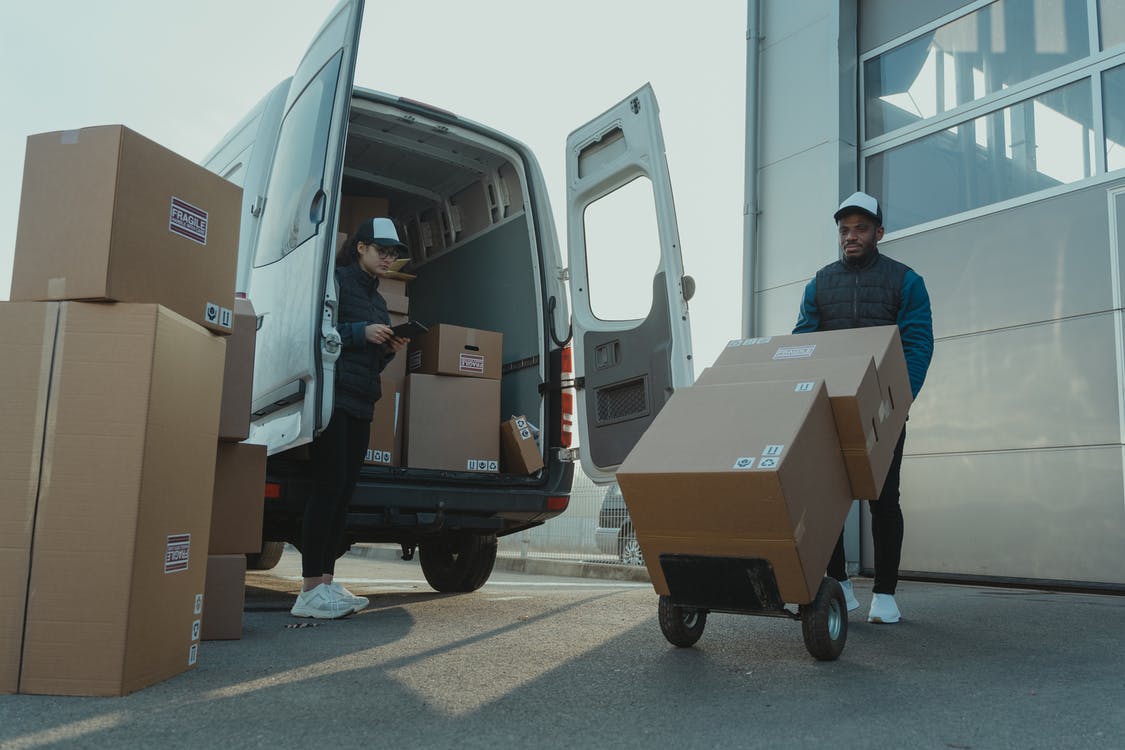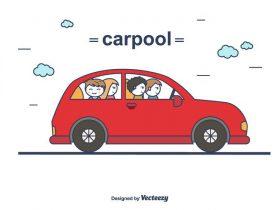Bringing items to the end consumer is as old as civilization, but many delivery firms and retail partners are in search of a profitable model
Many assume that last-mile delivery arose alongside the rapid growth of e-commerce. That narrative is simply false. Household moving companies have long considered themselves the final mile of delivery. Before them, there was the milkman, common in the early 1900s, who brought fresh dairy products to consumer doorsteps.
Lyft, Uber, et al seemed to change the game, though, but even their independent contractor-based businesses are not unique. During the Roman Empire, items reached eager citizens through cursus publicus (Latin for “the public way”). The system was a state-run courier and transportation system that utilized everyday citizens called mancipes, aka contractors, to transport food, animals and equipment.
The last mile is not new, but it is behaving very much like a startup company, seeing rapid growth in the last few years and now, perhaps, transitioning into its next phase — sustainability.
Last mile looks for balance
“The market will find a more natural equilibrium,” Guy Bloch, CEO of delivery technology firm Bringg, told Modern Shipper. “Today, what is done with market funding, now it will find a more equilibrium [of investment]. To really do it well and always find the most efficient driver to satisfy your customer at a margin that works for you, you need to digitize.”
The last mile is going through change and doing so rapidly. Like a startup company that invested heavily in scaling before trying to find its true profitability model, the last mile is now looking to find its equilibrium — that perfect mix of providers, technology and customer service.
According to ShipBob, 73% of shoppers expect affordable, fast deliveries when ordering online. But what is affordable to the customer is not always affordable to the shipper. A 2021 Gartner report found that retailers with 50% or more of their sales coming from online channels saw logistics costs 50% above those of retailers with primarily in-store sales.
A report from Precedence Research said the last-mile delivery transportation market was $179.96 billion in 2021 and will grow to $423.3 billion by 2030.
Free shipping declines
Clearly, there is opportunity ahead. And it’s possible — in fact even likely — that what is happening today is just a preview of the changes to come. A Gartner analysis of 500 leading retailers found there has been a 12.5% decline in the number of retailers offering free shipping and a 30% reduction in those offering free shipping on returns between late 2019 and August 2020.
“What we used to see was subsidization of last-mile delivery by gig fleets and now we see that relaxing so the market will be more competitive,” Bloch said. “Gig is the new way of continuing [to service the customer] and we see what used to be standard shipping over the years start to move to local delivery. A year or two years ago, the gig fleets subsidized a lot of the adoption. … What we are going to see is it will be less subsidized than before.”
Two recent reports on the state of the last mile have previewed some of the changes, and real-world feedback from one of the globe’s largest retailers highlights the struggles brands are facing in meeting this new demand.
Omnichannel demands grow
“Logistics and delivery providers are trying to meet the growing demand for competitive omnichannel delivery services demanded by shippers and end customers, including same-day delivery, ship-from-store and returns. These require greater speed, and agility, and often a restructuring of resources, technologies and operational processes,” the report noted.
In a survey of 200 logistics and transportation leaders from North America and Europe, the report found that 68% of respondents already offered same-day delivery or will do so by the end of this year, and 27% believe offering returns (which can be as high as 30% of online orders) and pickup services provide a strategic advantage.
Still, connectivity is a major roadblock, with 44% citing shipper onboarding and integration of carriers as an operational pain point, and 44% also saying visibility into outsourced delivery partners is an issue. Another 41% said carrier and driver management were issues.
The Roman mancipes simply commandeered wagons and other needs along the way, but today’s last-mile delivery network is a bit more sophisticated.
“[The industry] is calling and screaming for technology to kick in,” Bloch said. “It’s a big change. It’s a major force that none of us control in finding the equilibrium.”
Bloch went on to say that he expects companies to start acting more strategically in developing their last-mile delivery strategies.
“Based on the needs of the market, retailers are perfecting [their strategies] in different ways,” he said.
American Eagle logistics flies high
Global American Eagle Outfitters (AEO) is one of those companies. In 2021, AEO (NYSE: AEO) acquired both AirTerra and Quiet Logistics, the former being a logistics technology company and the latter being a third-party logistics provider that services omnichannel needs for more than 50 brands.
The acquisitions were merged into Quiet Platforms. In its latest earnings release on Friday, the outfitter said that its supply chain acquisitions contributed about 3 percentage points to the company’s 2% revenue growth in Q1.
In an April webinar for project44, Bill Besselman, senior vice president of supply chain execution at AEO, said a rethinking of the company’s supply chain is helping it manage the last mile.
“When we thought about the last mile, we realized the last mile wasn’t a mile at all, it was 1,300 miles,” he said. “Thirteen hundred miles was a barrier for two reasons — one is speed, and the other is cost. We needed to rethink the supply chain.”
Besselman went on to say that AEO realized it needed to relocate merchandise closer to the end consumer to shorten inbound times to stores and delivery times to customers, but that the diversification of the last-mile carrier market was creating new challenges.
“There is an opportunity for us as midsized retailers and brands to get after these problems differently than what we have done in the past,” he said.
Brittle supply chains
“One of the things we learned during the pandemic is that supply chains are very brittle and they are not very successful [if something breaks],” Besselman added, noting that 58% of AEO transactions now take place online. “Carrier selection is incredibly important to us. [Different] carriers allow us to offer different services.”
That is a point that Bloch repeated, pointing to the relaxing of subsidies to fund the last mile leading to more competition in the space as logistics providers look for sustainable and profitable paths forward.
“We are going through a major transformation and what we all [thought] in theory [is no more],” he said.
“The way I look at it, we are about to finish the first wave of COVID, the reactive wave,” Bloch added. “The consumer hasn’t gone back to the pre-COVID days, they got rewired. Now we are flipping to the second wave and the second wave is how do you build a robust infrastructure [to sustain e-commerce and last-mile delivery].”
A significant portion of a sustainable last mile involves ways to better manage returns.
“My perspective is if you want to play in the online game, which is different than the offline game, part of that is returns,” Bloch said. “Returns hurt the margins of the business. What I see more retailers do is find creative ways to manage returns.”
And more providers are jumping into the returns game. In March, DoorDash (NYSE: DASH) announced it was testing a returns program that allowed its drivers to pick up returns at a customer’s home and deliver it to the nearest FedEx, UPS or post office. Unicorn upstart Veho is also testing a returns program, as are others.
Returns offer a path to profitability
Bloch said services like returns are part of the evolution of the last-mile delivery space.
“Once it’s democratized, once it’s digitized, once it’s connected, you can start developing flows that serve your business,” he said.
The last-mile delivery wheels are spinning, and it is technology powering the revolution. The Bringg survey found that for businesses struggling with managing last-mile delivery vehicles and providers, only 22% use efficiency solutions such as automated order batching or auto dispatch and routing. Just 27% of logistics providers offer self-scheduling.
Driver wages are also an issue, with 65% saying they are paying drivers more in 2022 than they did in 2021, but 38% say driver satisfaction and retention remain issues. For an industry that depends on gig drivers able to work for any platform on a given day, wages may play an outsized role.
“The more the market becomes competitive, the more we will need to increase wages,” Bloch said. “As we continue the next couple of years and find the equilibrium, we will see more and more fleets increase wages. Remember, these drivers are 1099 [workers] so they can work for you or another company, and many work for multiple platforms. What’s important is to bring competition into the market.”
Ultimately, the progression of the last mile is being driven by one factor that Besselman explained in his presentation.
“We are excited about the customer experience opportunity because supply chain has emerged from the back to a customer-centric function,” he said.
Link: https://www.freightwaves.com/news/building-a-sustainable-profitable-future-for-last-mile-delivery
Source: https://www.freightwaves.com
















Leave a Reply